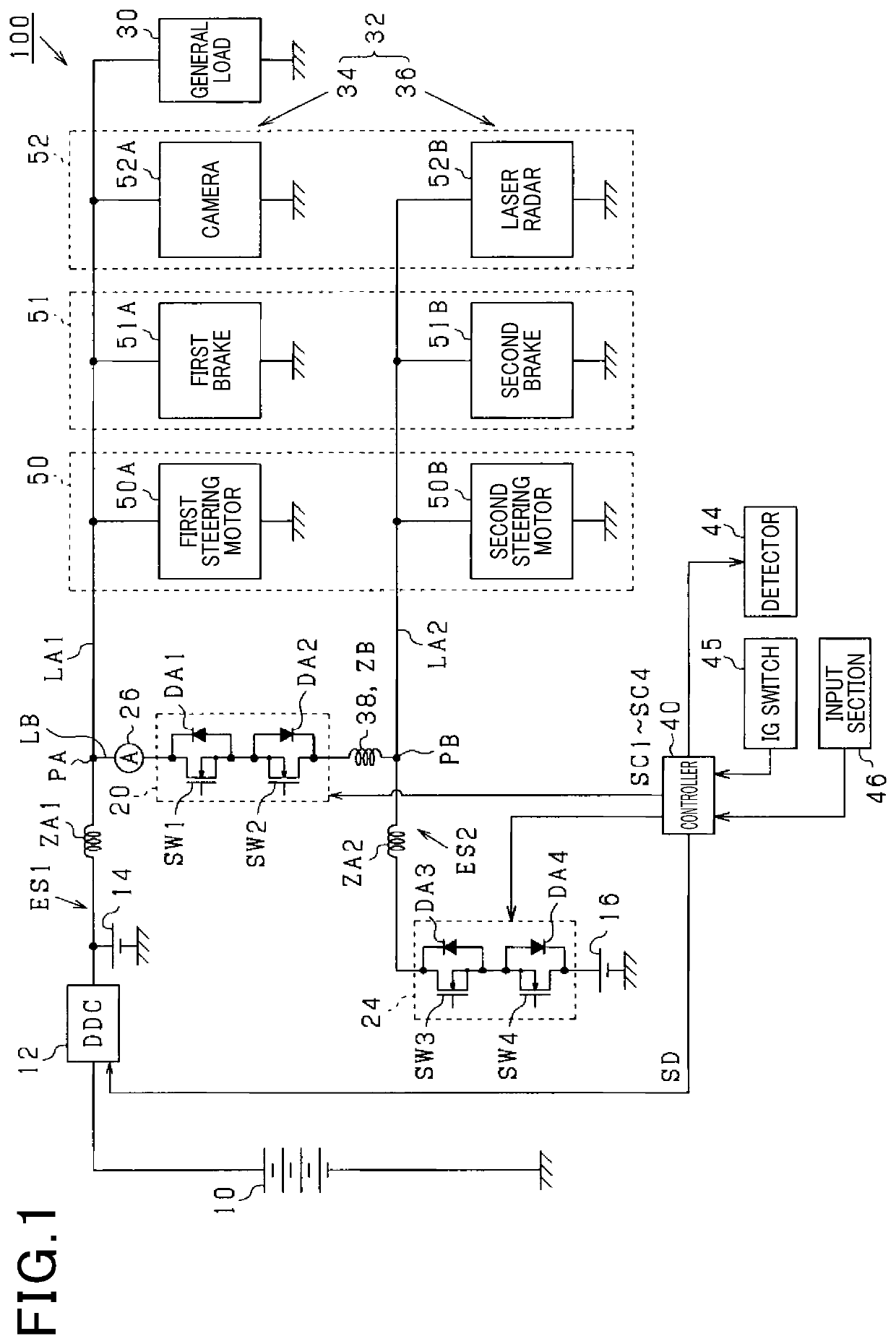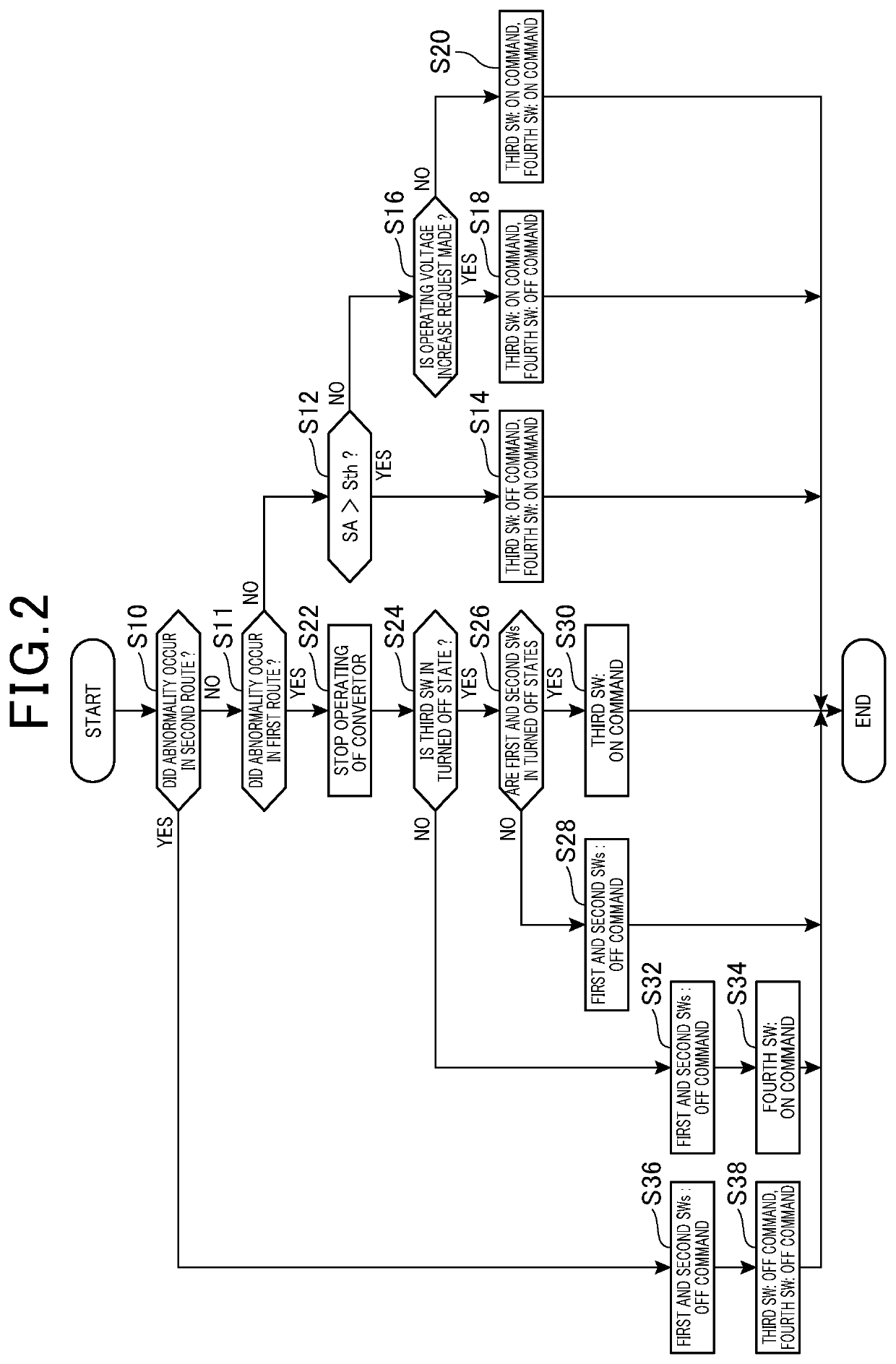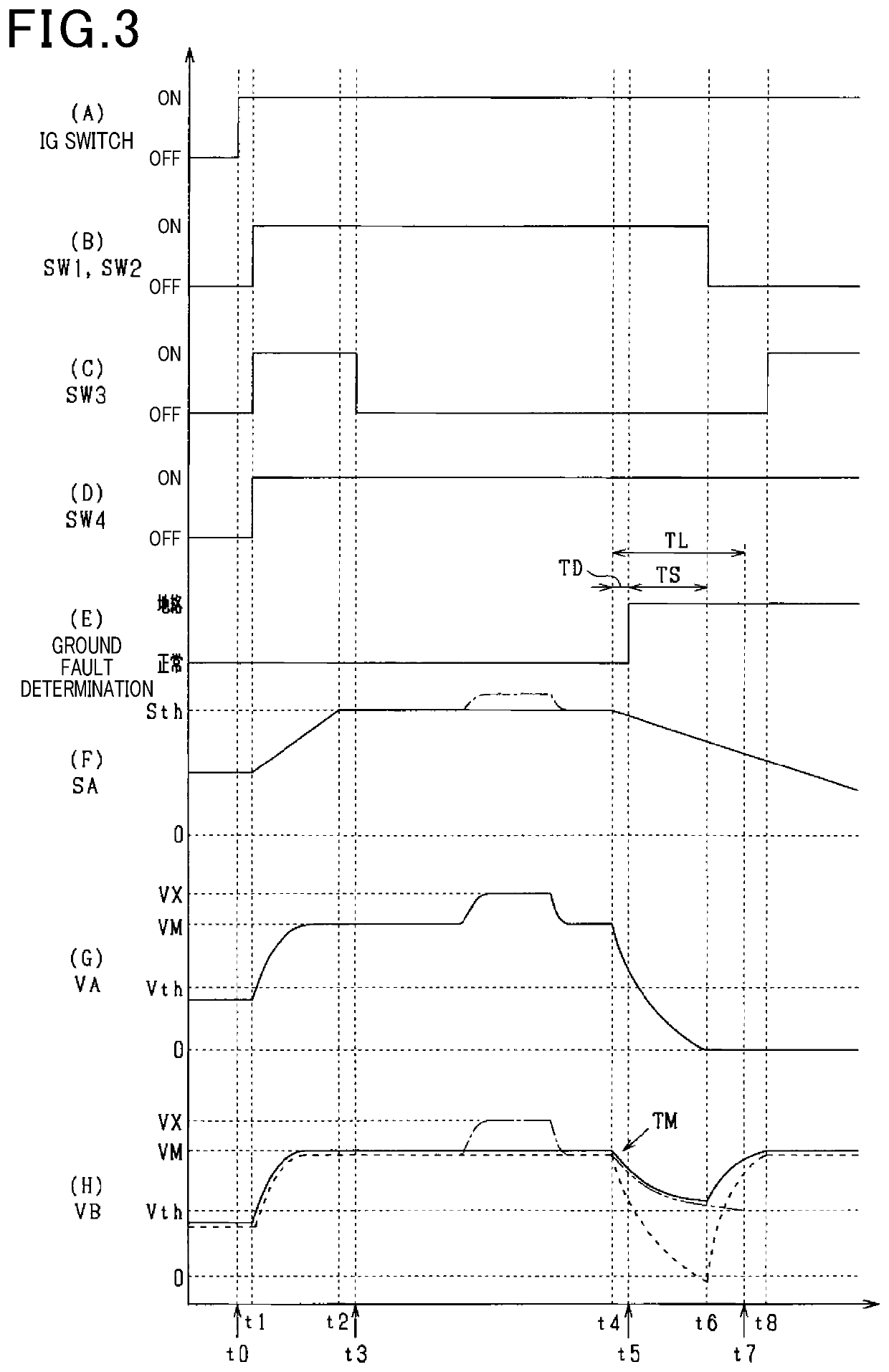[0010]In view of this, according to one aspect of the present disclosure, the opening-closing switch (i.e., the switch) having the diode component is disposed between the connection point at which the connection path connects to the second route, and the electrical storage device. A forward direction of the diode component is extended from the electrical storage device to the connection path. With this, it is determined whether the electrical storage device is in a fully charged condition, and if the determination is positive (i.e., the electrical storage device is in the fully charged condition), a switch-off command is output to the switch and switches off the switch. With this, the electrical storage device stops charging when it is in the fully charged condition while appropriately discharging due to the diode component. As a result, the energy storage device can avoid or reduce the overcharging.
[0019]In view this, according to yet another aspect of the present disclosure, an inductance is connected in series to the inter-route switch in the connection path. Further, a time constant of a circuit composed of the second route and the connection path is designed to satisfy a condition that a voltage of the second load does not decrease to less than the lower limit of the operating voltage during the shut-off period. That is, even if the abnormality occurs in the first route, the power supply system generates a transitional voltage (i.e., a difference in voltage) between the first and second routes based on a transitional change in current caused by the abnormality and the inductance component of the inductance so as not to cause the voltage of the second load to decrease to less than the lower limit of the operating voltage. With this, the second load can be continuously operated before and after the switch enters the switched-off state.
[0021]Specifically, in a power supply system employed in a moving body having a first load and a second load which perform respective functions necessary therefor, when an abnormality occurs in the first route and if the second load is unable to continuously operate at the time, the first load and the second load are simultaneously stopped operating, thereby disenabling continuous operation of the moving body. However, according to another aspect of the present disclosure, since the second load is continuously operated before and after the switch is switched off, the moving body can be continuously operated.
[0023]Specifically, in general, some of switching circuits are composed of a first opening and closing switch (i.e., first switch) and a second opening and closing switch (i.e., second switch) serially connected with diode components being directed reversely from each other. According to yet another aspect of the present disclosure, a charging amount in the storage device can be appropriately reduced by switching a state of each of the first switch and the second switch. Specifically, when it is determined that a restricted charging request for allowing the electrical storage device to charge in a restricted charging condition (i.e., based on a limited amount of charging current) is made, the first switch is switched on and the second switch is switched off. With this, the electrical storage device can continuously charge even based a limited amount of charging current through the diode component included in the second switch. Further, when it is determined that the electrical storage device is in a fully charged condition, the first switch is switched off and the second switch is switched on. With this, the charging of the electrical storage device can be stopped thereby limiting an amount of charge in the electrical storage device.
[0025]Specifically, in a power supply system including a voltage generator and an electrical storage device, it is necessary to raise an operating voltage generated by the voltage generator in accordance with an operating state of each of the first load and the second load. As a result, the electrical storage device may sometimes overcharge when the electrical storage device charges based on the raised voltage. In view of this, according to yet another aspect of the present disclosure, when a raising request for raising an operating voltage is made, it is determined that a restricted charging request for charging in a restricted charging condition is made, and the first switch is switched on and the second switch is switched off. As a result, a forward voltage of the diode component included in the second switch suppresses an increase in voltage applied to the electrical storage device, thereby preventing or reducing an overcharge of the electrical storage device.
 Login to View More
Login to View More  Login to View More
Login to View More 


